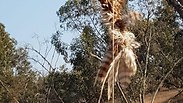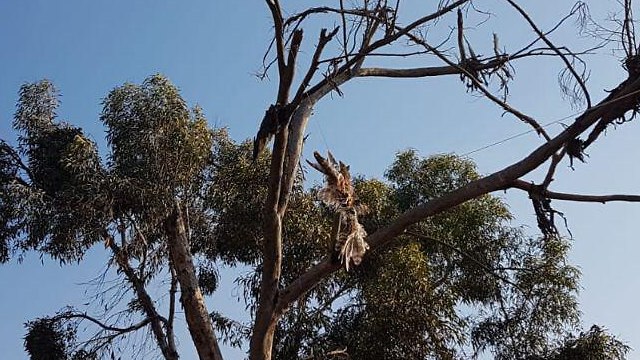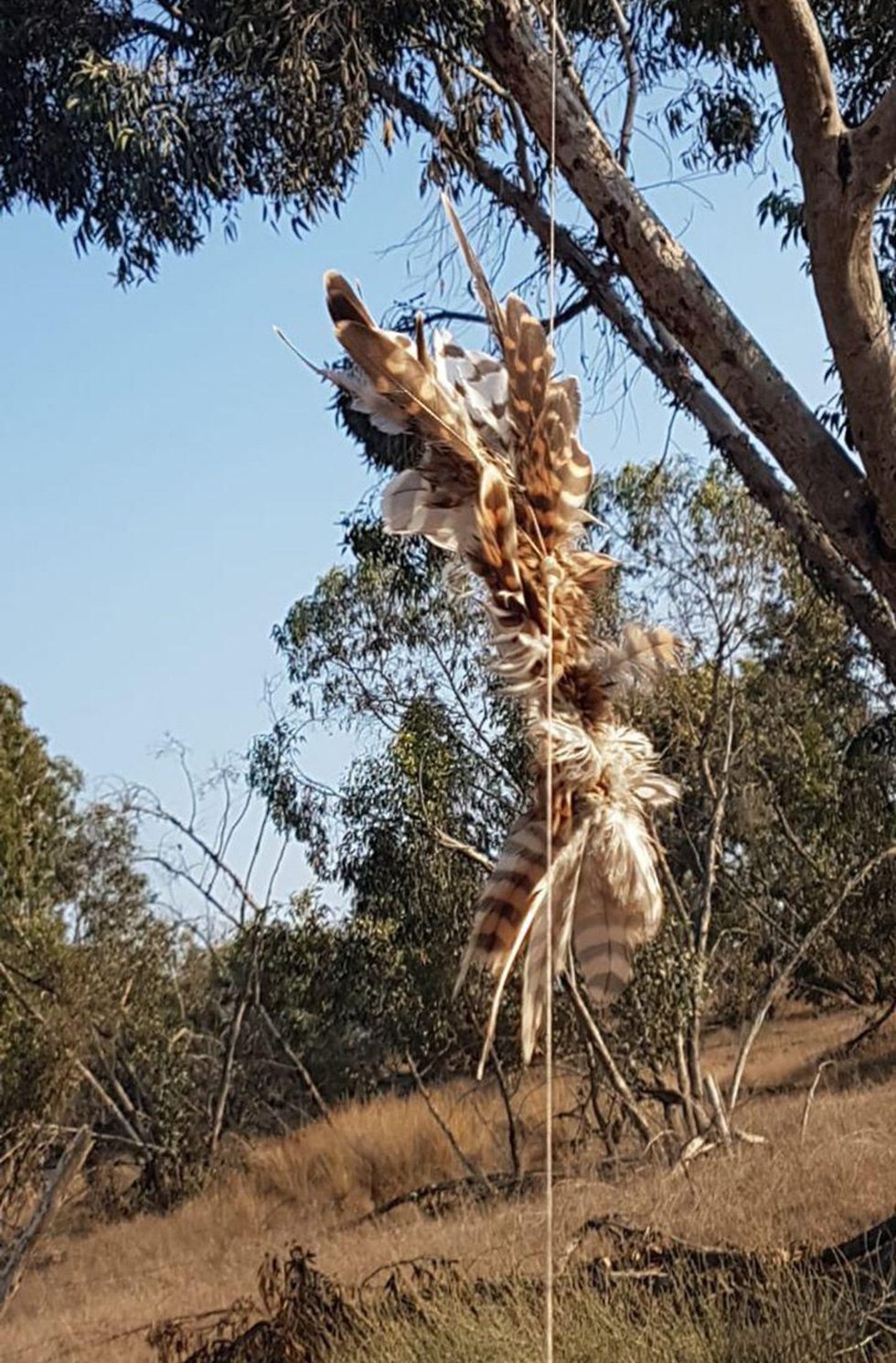

Falcon sent from Gaza used for fire terrorism
A common kestrel found with an incendiary device attached to a wire that was tied to a harness put on its body; this marks the first time an animal is used to ignite fires in Israel; Nature and Parks Authority considering filing complaint under international treaties.
A common kestrel (a type of falcon) whose legs were tied to a wire with an incendiary device at the other end was found dead hanging from a tree by Israel Nature and Parks Authority (INPA) personnel earlier this week west of the Besor stream, close to the Gaza Strip border.
The kestrel was wearing a harness that was linked to a steel wire at the other end of which was the incendiary device, making it likely it came from the Gaza Strip.
This would mark the first time an animal sent from the Gaza Strip has been used to ignite fires in Israel.

The INPA is considering filing a complaint—under the appropriate international treaties—over the use of an animal for terrorism.
The common kestrel is a small raptor that is found throughout Israel, mainly along the Mediterranean Sea coast and less in desert areas. The population in Israel is stable and widespread and measures in the many thousands. Its favorite foods are rodents, insects and reptiles. In the 1960s the common kestrel was in danger of extinction due to initiated poisonings.
Although small, the kestrel is a highly territorial bird and does not shy away from attacking other birds and large predators who invade its territory. It is considered to have an especially rapid flight and can hunt its prey in the air.
In the past, the common kestrel and other birds of prey that were caught illegally in the Gaza Strip were brought to Israel wounded and given veterinary care.
INPA inspectors found the kestrel after putting out a fire that had broken out in the Besor National Park.
Approximately 10,000 dunams (2,471 acres) of nature reserve and national park land close to the Gaza Strip have been burned thus far from the kite and balloon terrorism.
Matan Tzuri, Ilana Curiel and Erez Erlichman contributed to this story.

















